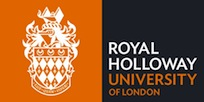Speaker
Mr
Adam Bailey
(Imperial College)
Description
$^{85}$Kr is an anthropogenic radioisotope which makes up a very small fraction of the Kr abundance in the atmosphere, and contributes to the background in double-phase xenon detectors searching for WIMP dark matter. It has a half-life of 10.8 years and decays predominantly via a $\beta^-$ decay with an endpoint of 687 keV. Commercially available xenon procured for LUX contained 130 ppb g/g Kr/Xe, which would lead to unacceptably high background. Before the start of the experiment this was reduced to 4±1 ppt g/g by chromatographic separation, as this noble gas is not removed further by the standard purification methods during operation. Current measurements of the $^{85}$Kr concentration use gas sampling assays to determine the overall Kr content with ppt sensitivity, and then assume a ratio of $^{85}$Kr/Kr as measured in the atmosphere. It is prudent to try to assess this background by determining the $^{85}$Kr content directly. This is possible due to a low branching ratio $\beta^-$ decay providing a delayed $\beta - \gamma$ coincidence with $T_{1/2}$ ~1 $\mu$s. We present results from a search of these rare decays performed on the LUX data used to derive the WIMP result previously published.
Primary author
Mr
Adam Bailey
(Imperial College)




